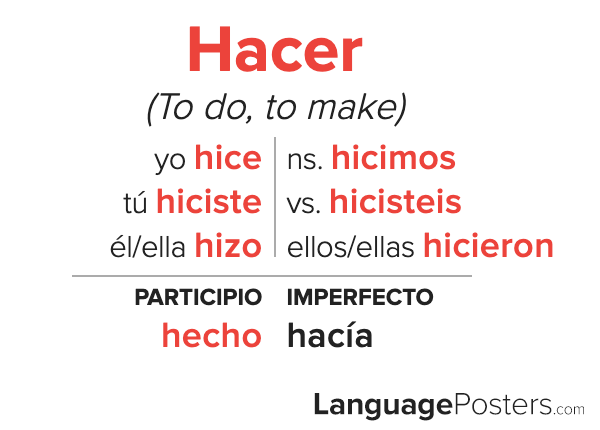Hacer Preterite Tense Conjugation - Spanish Preterite Tense Verb Conjugation - Conjugate Hacer in Spanish Preterite Tense

Hacer is a Spanish verb meaning to do, to make. Hacer is conjugated as an irregular verb in the preterite tense. Hacer appears on the 100 Most Used Spanish Preterite Tense Verbs Poster as the 15th most used irregular verb.
For the present tense conjugation, go to Hacer Conjugation - Present Tense.
Hacer Conjugation: Preterite Tense
| yo | hice |
| tú | hiciste |
| él/ella | hizo |
| ns. | hicimos |
| vs. | hicisteis |
| ellos/ellas | hicieron |
*Irregular forms in bold.
Hacer Participio
The participio of Hacer is hecho. The present perfect tense is formed by combining the auxiliary verb haber with the participio.
Hacer Imperfect Root
The imperfect root of Hacer is hacía. The imperfect tense is rarely irregular and can be easily conjugated from this form, which is the yo, and él/ella conjugation.
Regular vs. Irregular Verbs
A verb is called a regular verb when its conjugation follows a typical pattern. A verb which does not follow these patterns exactly is called an irregular verb. In Spanish Preterite Tense, the 3 regular patterns are for verbs ending in ar, er, and ir.

Spanish Preterite Tense Conjugation Chart
Looking for more verbs like Hacer? Check out our Spanish Preterite Tense Conjugation Chart, the 100 Most Used Spanish Preterite Tense Verbs Poster!

